Sandia Peak Tramway
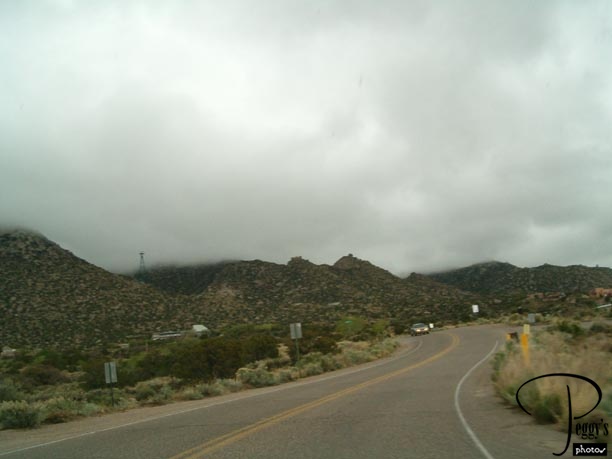
Day 8: Linda’s and my original plan for the day was to take the Sandia Peak Tramway up to the top of the Sandia Mountains. However, we discovered that it was down for maintenance this day (every Tuesday), even though it had just reopened after being down for semi–yearly maintenance for the last two weeks. But we decided to drive up to the tramway depot anyway. This is the road (named Tramway) up to top of the hill. You can see one of the tramway’s towers in the photo. (Linda’s photo)

Sandia Peak Tramway
Sandia Peak Tramway
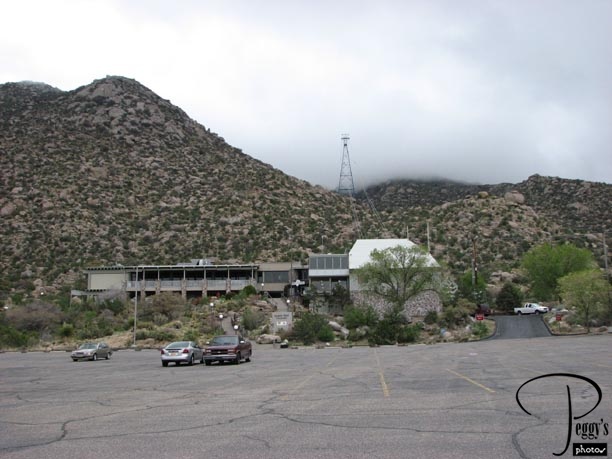
The Sandia Peak Tramway is billed as the World’s Longest Cable Car. It will take you up from the tramway station in the photo at about 6000 feet elevation to the top of Sandia Peak of 10,378 feet elevation. At the top is the upscale High Finance Restaurant. When the clouds finally lifted from the mountain top, we could see that it had snowed on it last night––Albuquerque was treated to quite a downpour. Not only was the weather today windy and cold, it was 16 degrees F on top of the mountain. I’ll try to go up on the tramway on my next visit to Albuquerque (which I did and I have put photos of our trip up the mountain on a slide show: Go to Slide Shows, United States, New Mexico, “Albuquerque: Sandia Peak Tramway”).

Sandia Peak Tramway
Sandia Peak Tramway
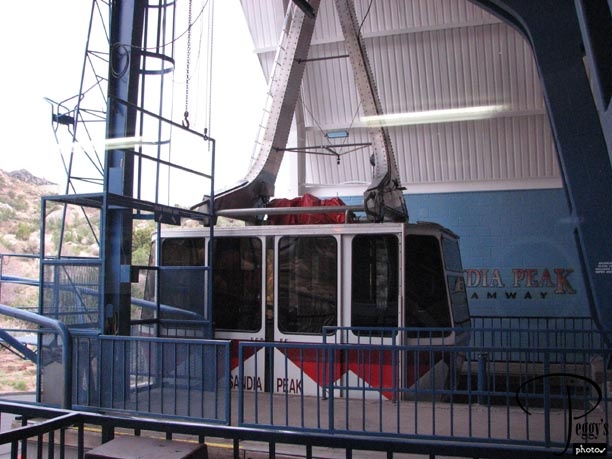
One of the cable cars that goes up the mountain.

Sandia Peak Tramway
Sandia Peak Tramway
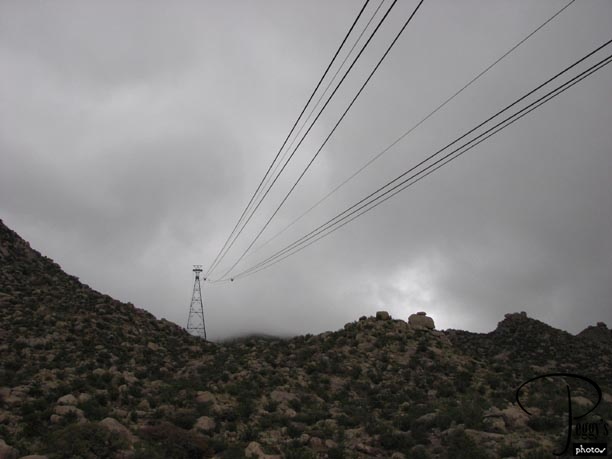
View from the tramway station of the cable car route.

Sandia Peak Tramway
Sandia Peak Tramway
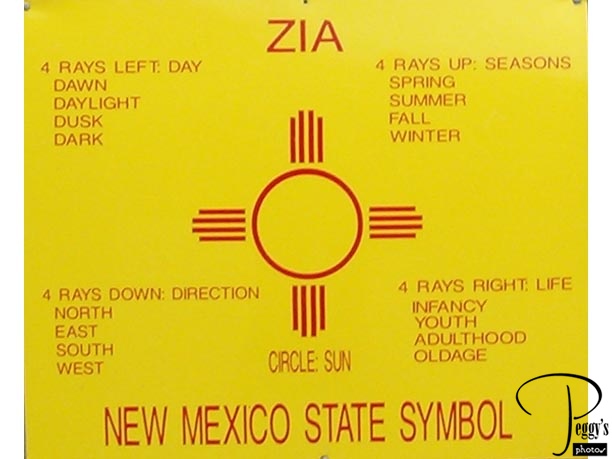
When I went through the photos that Linda took up here, I found this one––a description of the Zia Sun Sign, which is also the New Mexico State Symbol. She took this photo at the tramway station.

Sandia Peak Tramway
Sandia Peak Tramway
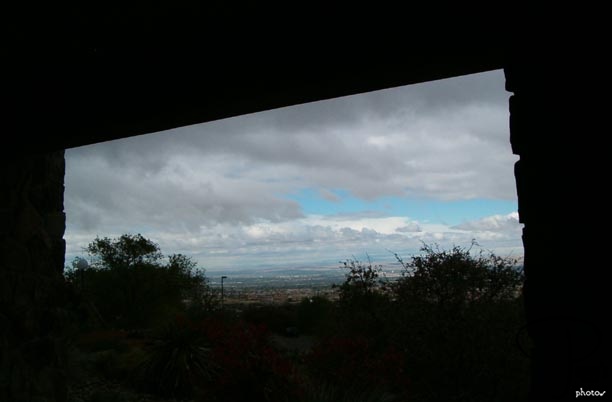
Also, Linda’s photo, of the view from the hills above Albuquerque, taken through an opening at the tramway station.

Sandia Peak Tramway
Sandia Peak Tramway
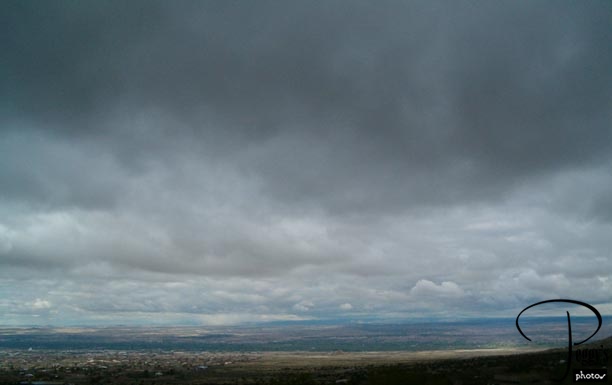
Also, Linda’s photo. Her camera caught the New Mexican colors of the valley quite well.

Sandia Peak Tramway
Sandia Peak Tramway
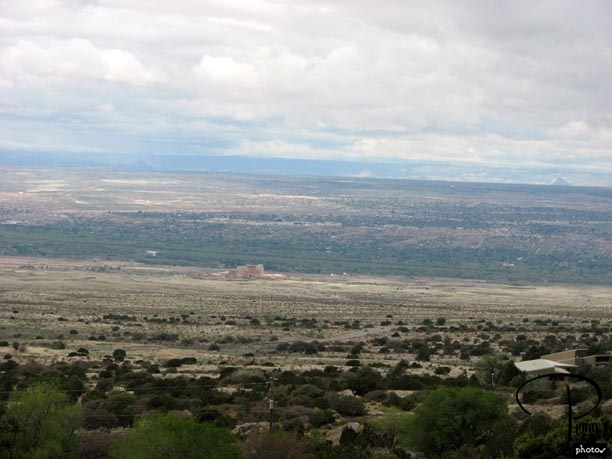
The valley below. You can see the Sandia Indian Casino in the photo. This is where our drive up the hill started.

Sandia Peak Tramway
Sandia Peak Tramway
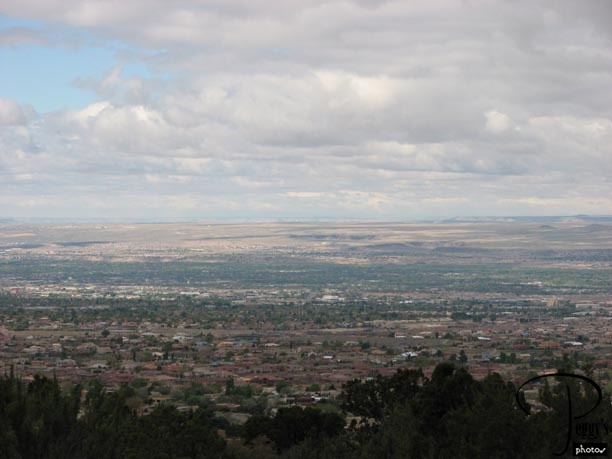
Houses in the foreground above the valley.

Sandia Peak Tramway
Sandia Peak Tramway
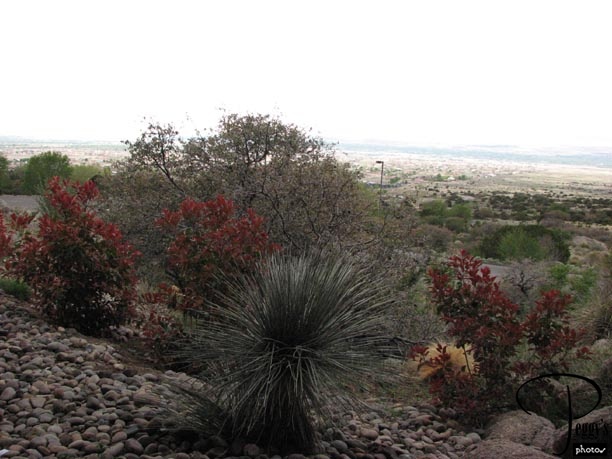
Plants on top of the hill and another view of the valley. I imagine that on a clear day the views from the top of Sandia Peak must be breathtaking.

Sandia Peak Tramway
Sandia Peak Tramway
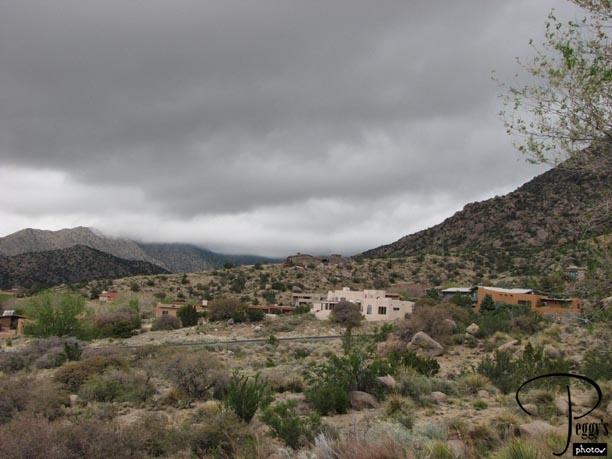
Houses on the hill.

Sandia Peak Tramway
Sandia Peak Tramway
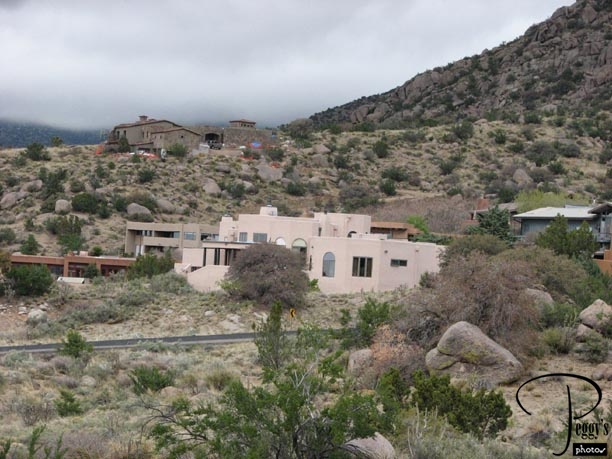
Closer–up view of the houses.

Sandia Peak Tramway
Albuquerque Balloon Museum
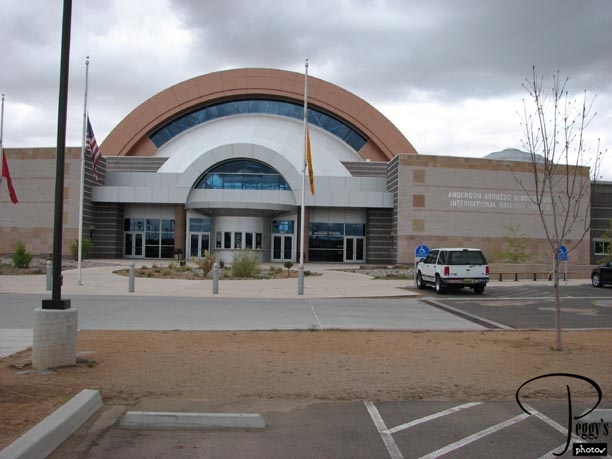
We next drove down the hill to visit the Anderson–Abruzzo Albuquerque International Balloon Museum, about 10 minutes away. The musuem is named in honor of balloonist and Sandia Tramway co–founder Ben Abruzzo.

Albuquerque Balloon Museum
Albuquerque Balloon Museum
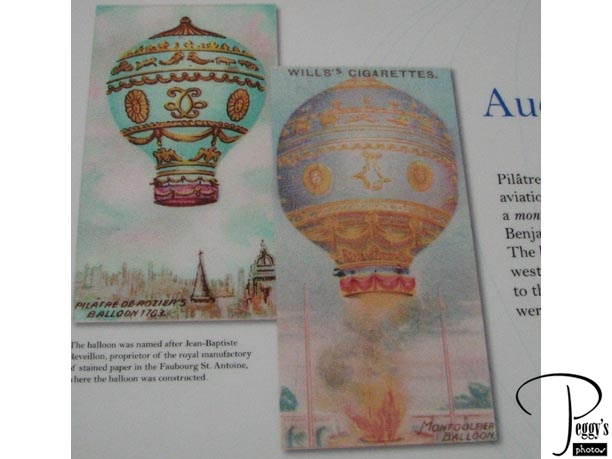
The balloons and displays in the museum were interesting. Remember that Albuquerque hosts the International Balloon Fiesta every year––this year from October 6 to 14, when hundreds of balloons lift up over the valley. The hot air balloon was invented by the Montgolfier brothers in France in 1783. The first flight carrying humans was made by Pilatre de Rozier and Marquis d’Arlandes on November 21, 1783, in Paris. These are pictures of the early balloons.

Albuquerque Balloon Museum
Albuquerque Balloon Museum
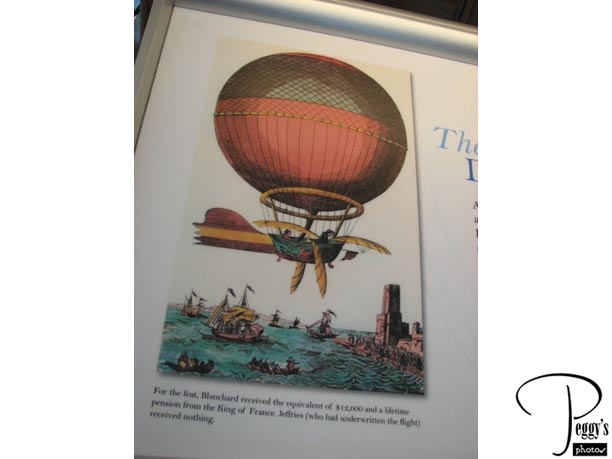
This is a poster of Blanchard’s Balloon. Jean–Pierre Blanchard and Dr. John Jeffries were the first, on January 7, 1985, to fly a balloon across the English Channel. It took them 2 1/2 hours to fly from England to France.

Albuquerque Balloon Museum
Albuquerque Balloon Museum
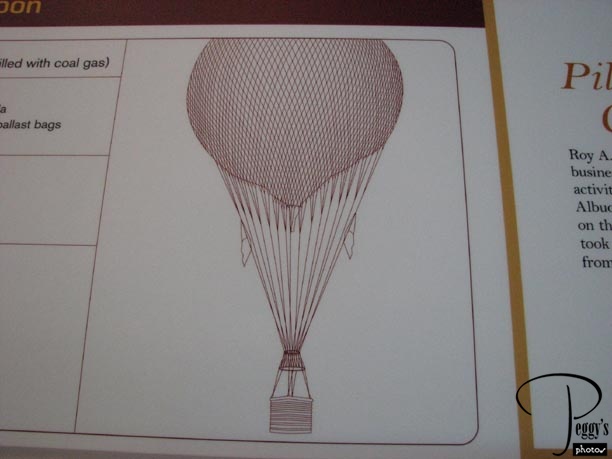
A balloon named Albuquerque, also called the Stamm Balloon. It used hydrogen or coal gas rather than hot air. It was flown during the 1907 Territorial Fair.

Albuquerque Balloon Museum
Albuquerque Balloon Museum
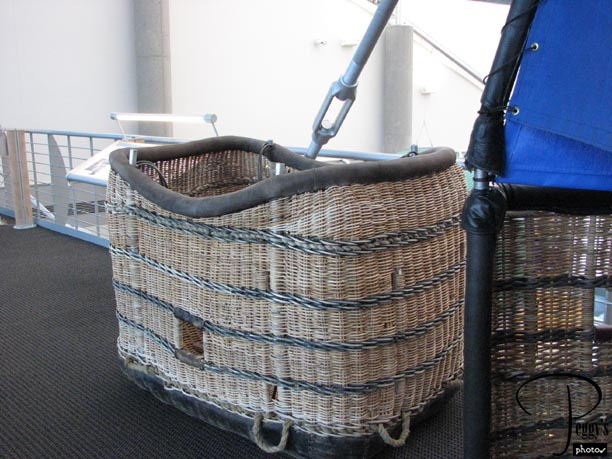
A passenger wicker basket like the one used with the Stamm Balloon.

Albuquerque Balloon Museum
Albuquerque Balloon Museum
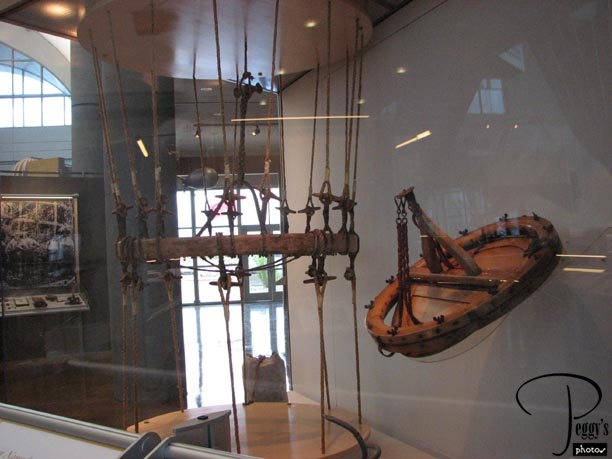
Rigging for a wicker basket.

Albuquerque Balloon Museum
Albuquerque Balloon Museum
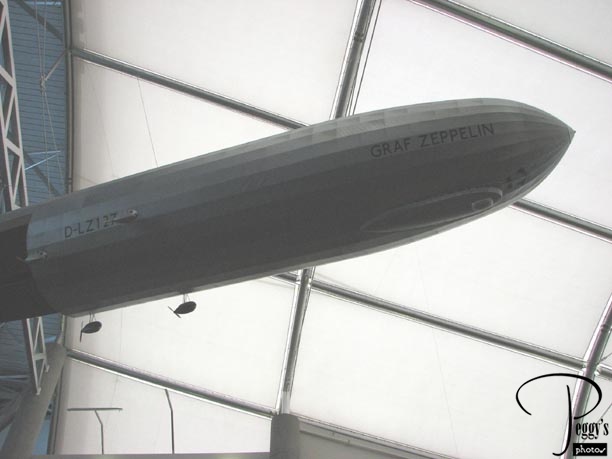
A mockup of the Graf Zeppelin, a dirgible (rigid airship) flown in the early 20th century. It flew for the first time on September 18, 1928. Its length was 776 feet and it was the largest airship up to that time. In October 1928, it flew from Germany to Lakehurst, New Jersey. In 1929, it flew around the world, taking 21 days, 5 hours, and 31 minutes for the trip. It flew more than 1 million miles and made 144 ocean crossings before being retired in 1940.

Albuquerque Balloon Museum
Albuquerque Balloon Museum
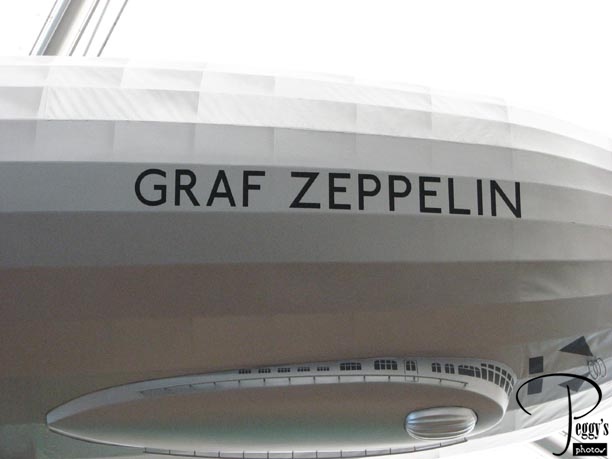
Close–up of the Graf Zeppelin.

Albuquerque Balloon Museum
Albuquerque Balloon Museum
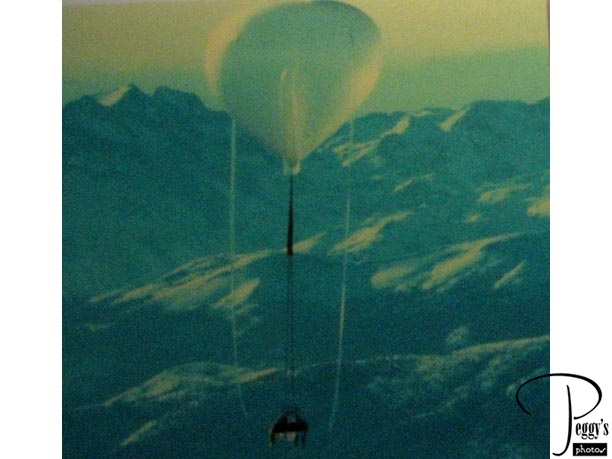
In 1980, Maxie Anderson and his son Kris launched the Kitty Hawk from San Francisco. They completed the first successful transcontinental flight in a balloon. Poster of the Kitty Hawk over the Sierra Nevada Range in California.

Albuquerque Balloon Museum
Albuquerque Balloon Museum
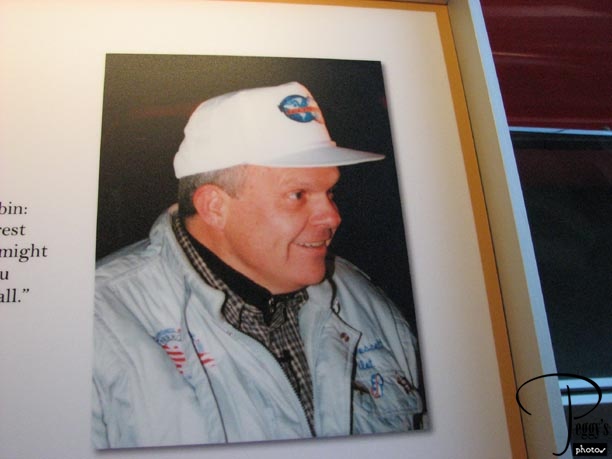
In 2002, Steve Fosett became the first balloonist to circumnavigate the world alone nonstop. In 1995, he was the first person to make a solo flight across the Atlantic in a balloon.

Albuquerque Balloon Museum
Albuquerque Balloon Museum
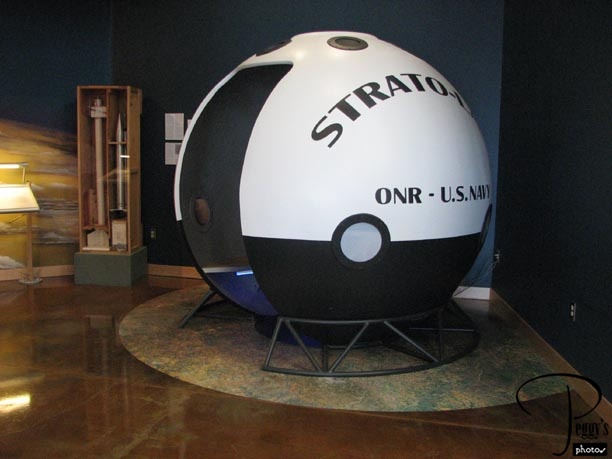
The Stratolab was a balloon–borne, high–altitude manned laboratory conceived by the Office of Naval Research, General Mills, Inc., and Winzen Research. It was a reusable gondola for stratospheric flight, lofted by a single large polyethylene balloon. Four flights were made in this gondola, starting in November 1956.

Albuquerque Balloon Museum
Albuquerque Balloon Museum
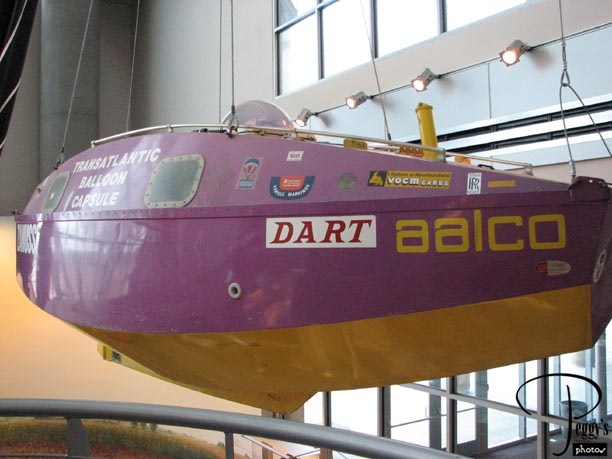
A trans–Atlantic balloon capsule on display.

Albuquerque Balloon Museum
Albuquerque Balloon Museum
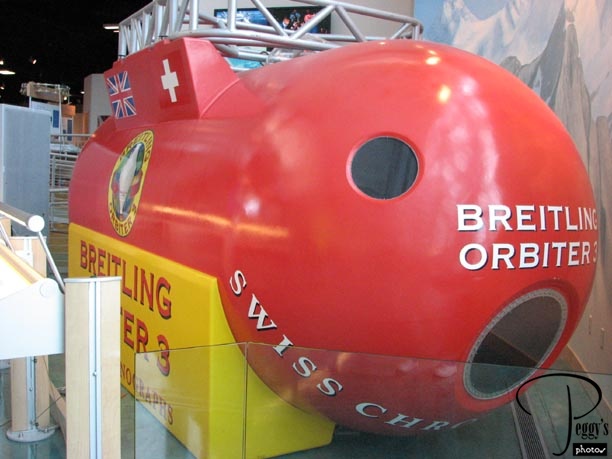
The Breitling Orbiter.

Albuquerque Balloon Museum
Albuquerque Balloon Museum
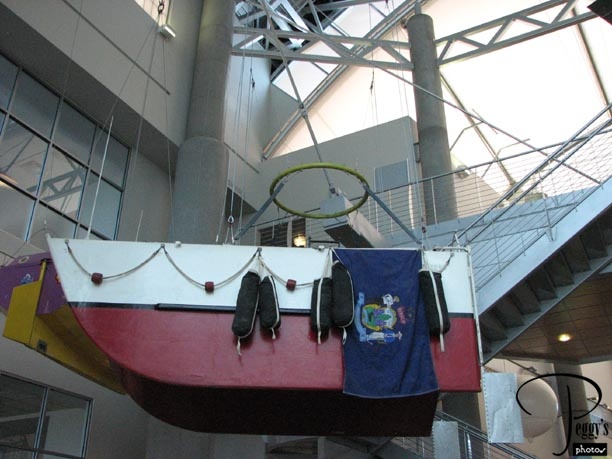
Another balloon gondola.

Albuquerque Balloon Museum
Albuquerque Balloon Museum
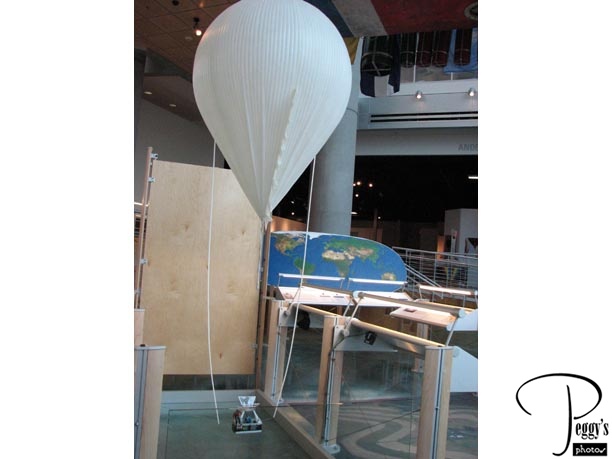
Display showing the relative sizes of a gondola and a balloon.

Albuquerque Balloon Museum
Albuquerque Balloon Museum
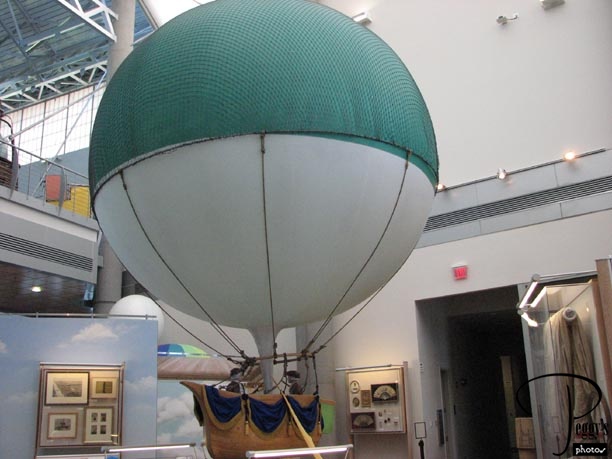
Another balloon display.

Albuquerque Balloon Museum
Albuquerque Balloon Museum
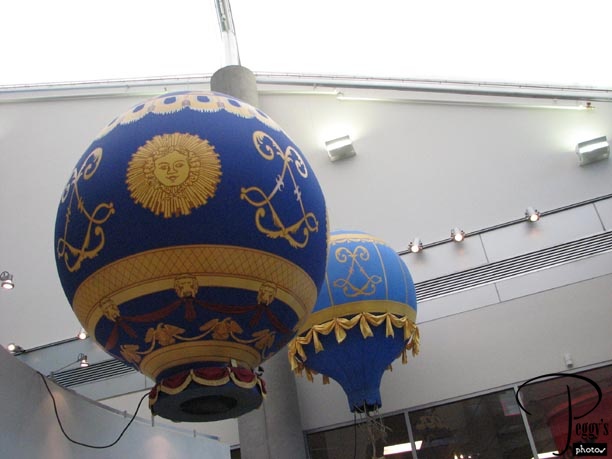
More balloons.

Albuquerque Balloon Museum
Albuquerque Balloon Museum
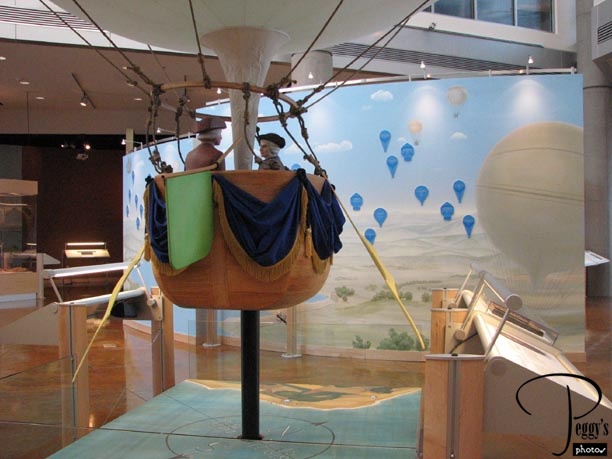
A gondola.

Albuquerque Balloon Museum
Albuquerque Balloon Museum
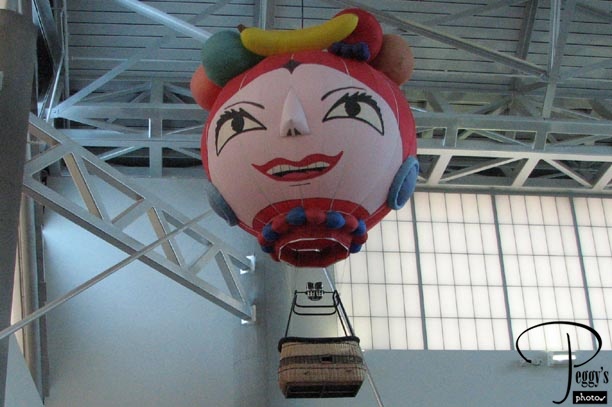
A fancy balloon.

Albuquerque Balloon Museum
Albuquerque Balloon Museum
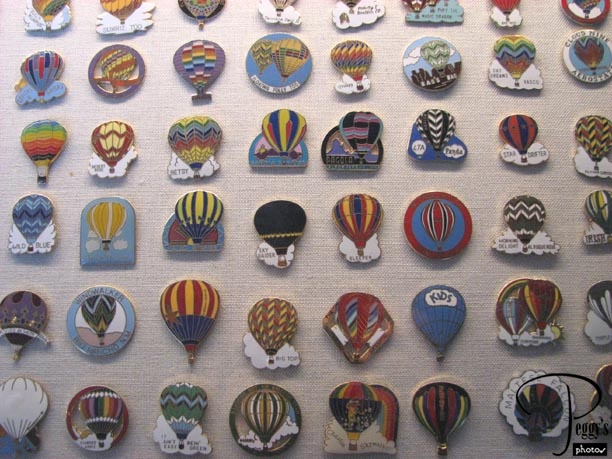
Balloon pins on display.

Albuquerque Balloon Museum
Albuquerque Balloon Museum
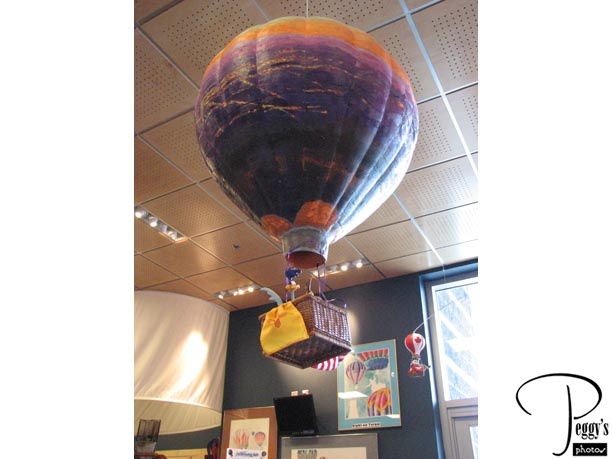
The museum had a very interesting gift store, selling balloons like this one, posters of balloons, Christmas ornaments shaped like balloons, etc.

Albuquerque Balloon Museum
Albuquerque Balloon Museum
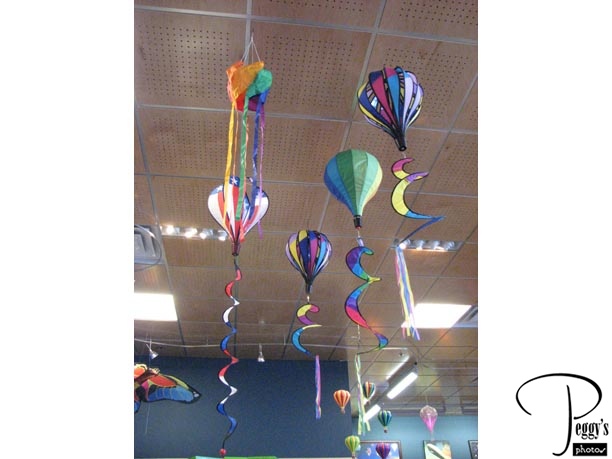
More balloons for sale at the gift store.

Albuquerque Balloon Museum
Albuquerque International Airport
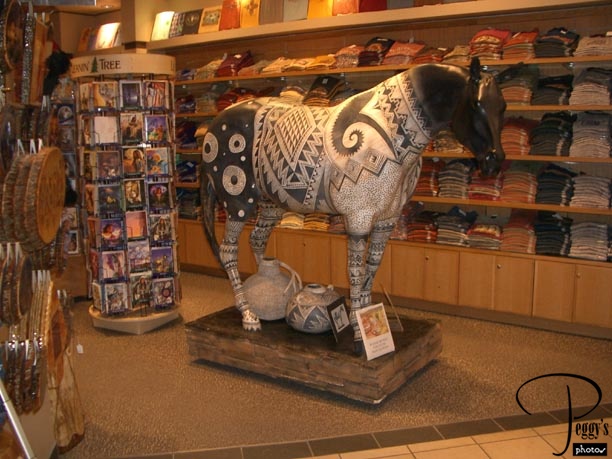
It was now time to go back to Linda’s and to start packing as I was to go back to LA tomorrow. Before leaving, I shipped the breakable items that I bought via UPS, a good idea if you don’t want to risk the beautiful Indian pottery that you just bought to break enroute. Day 9 (at the airport): If you haven’t been shopped–out yet during your visit, there are numerous interesting stores at the Albuquerque Airport to wander through. This store I specifically went into as someone told me there was a store at the airport where one of full–size Santa Fe Painted Ponies was on view. In 2001, Santa Fe sponsored a public art project called The Trail of the Painted Ponies, in which artists would paint and decorate statues of ponies. Photo: One of the full–size ponies.

Albuquerque International Airport
Albuquerque International Airport
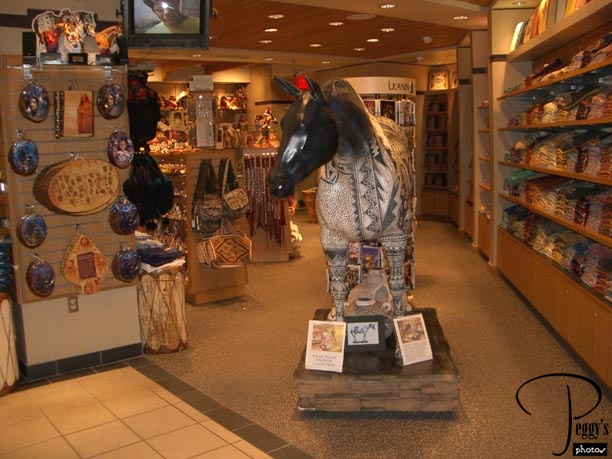
Another view of the pony. I wasn’t able to find out its name.

Albuquerque International Airport
Albuquerque International Airport
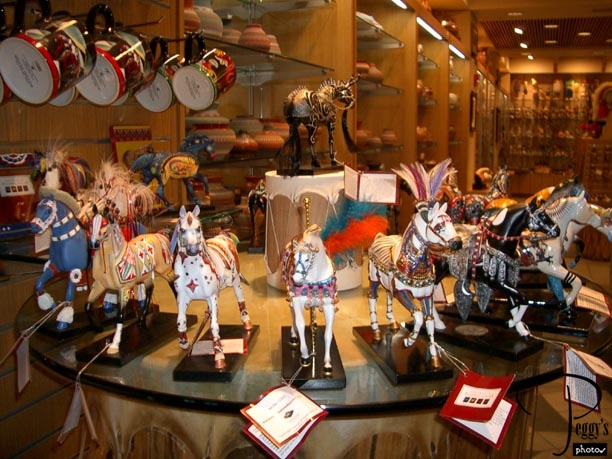
Small replicas of the Painted Ponies (these are all for sale).

Albuquerque International Airport
Albuquerque International Airport
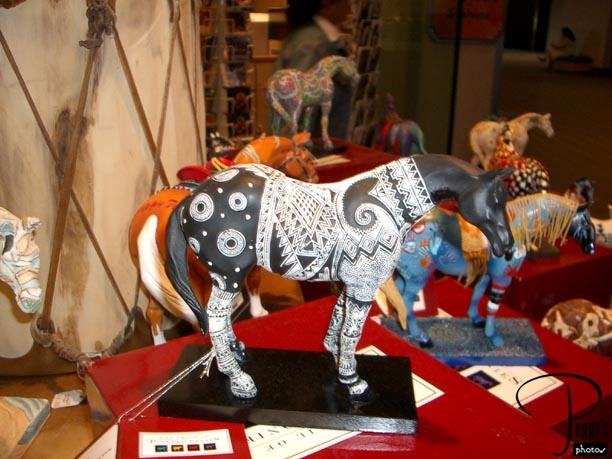
The small replica of the full–sized Painted Pony.

Albuquerque International Airport
Albuquerque International Airport
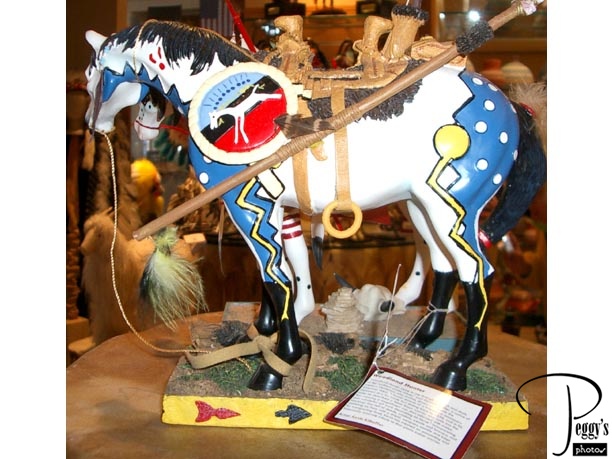
“The Woodland Hunter.” It represents the horse of a Teton Sioux warrior.

Albuquerque International Airport
Albuquerque International Airport
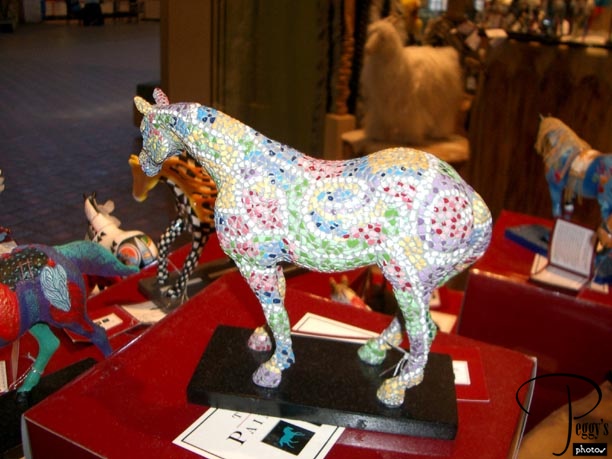
“Caballito.” Its mosaic surface was of crushed glass bottles and ceramic jugs.

Albuquerque International Airport
Albuquerque International Airport
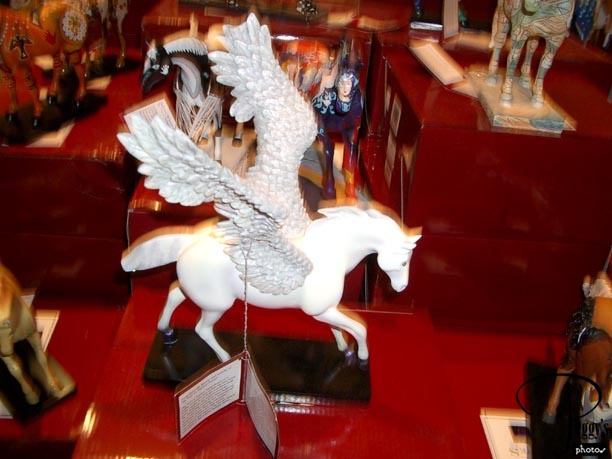
“Silver Lining”––Pegasus, horse of the Muses. It was now time for me to say goodbye to New Mexico, the “Land of Enchantment,” and I definitely was enchanted here. I enjoyed visiting the Indian pueblos, shopping in the stores and on the reservations, spending time with my sister and brother–in–law, seeing Jill and Jack again, viewing the uninterrupted vistas and the wide–open spaces, etc., etc. I really had a good time here.
